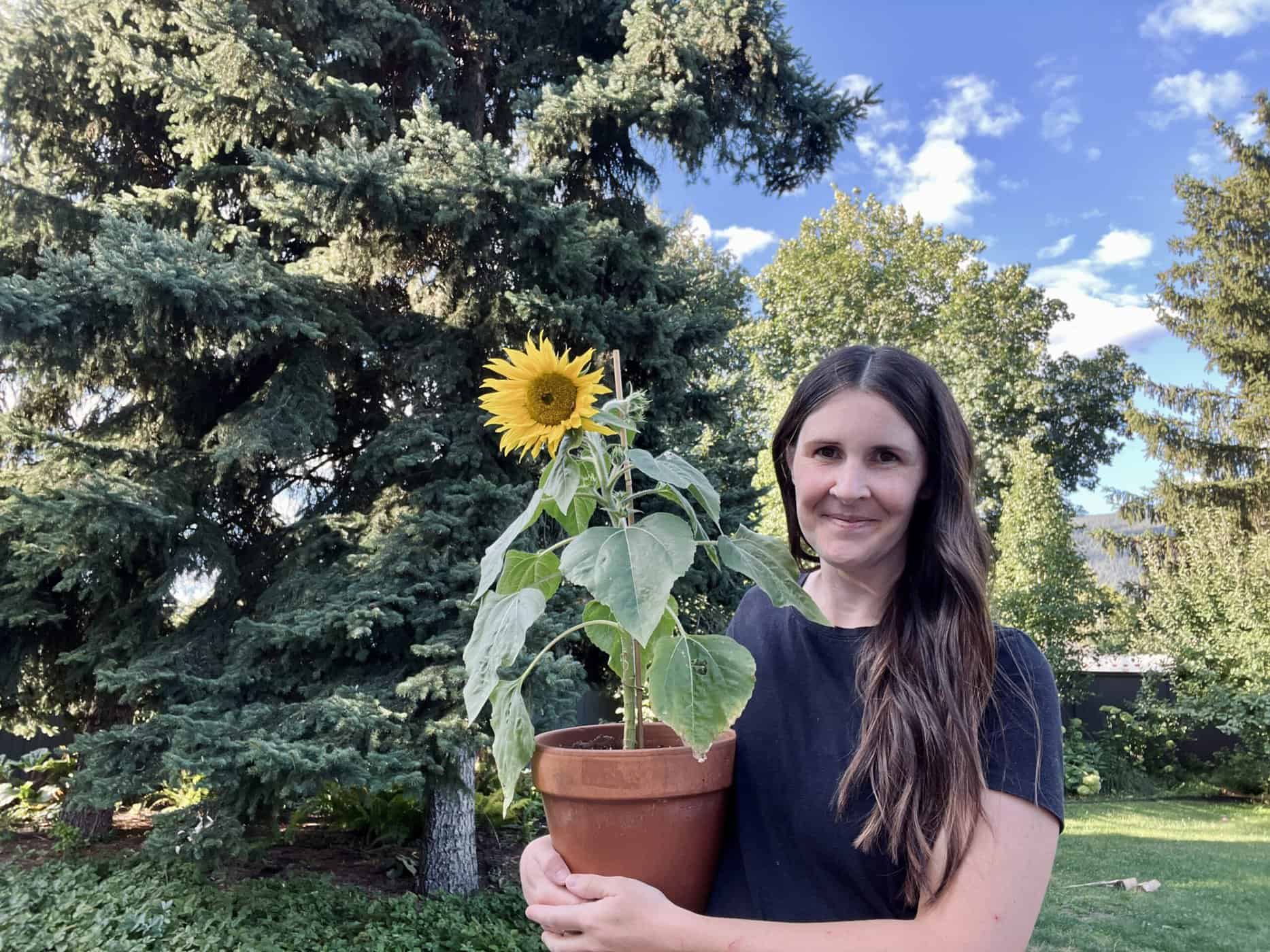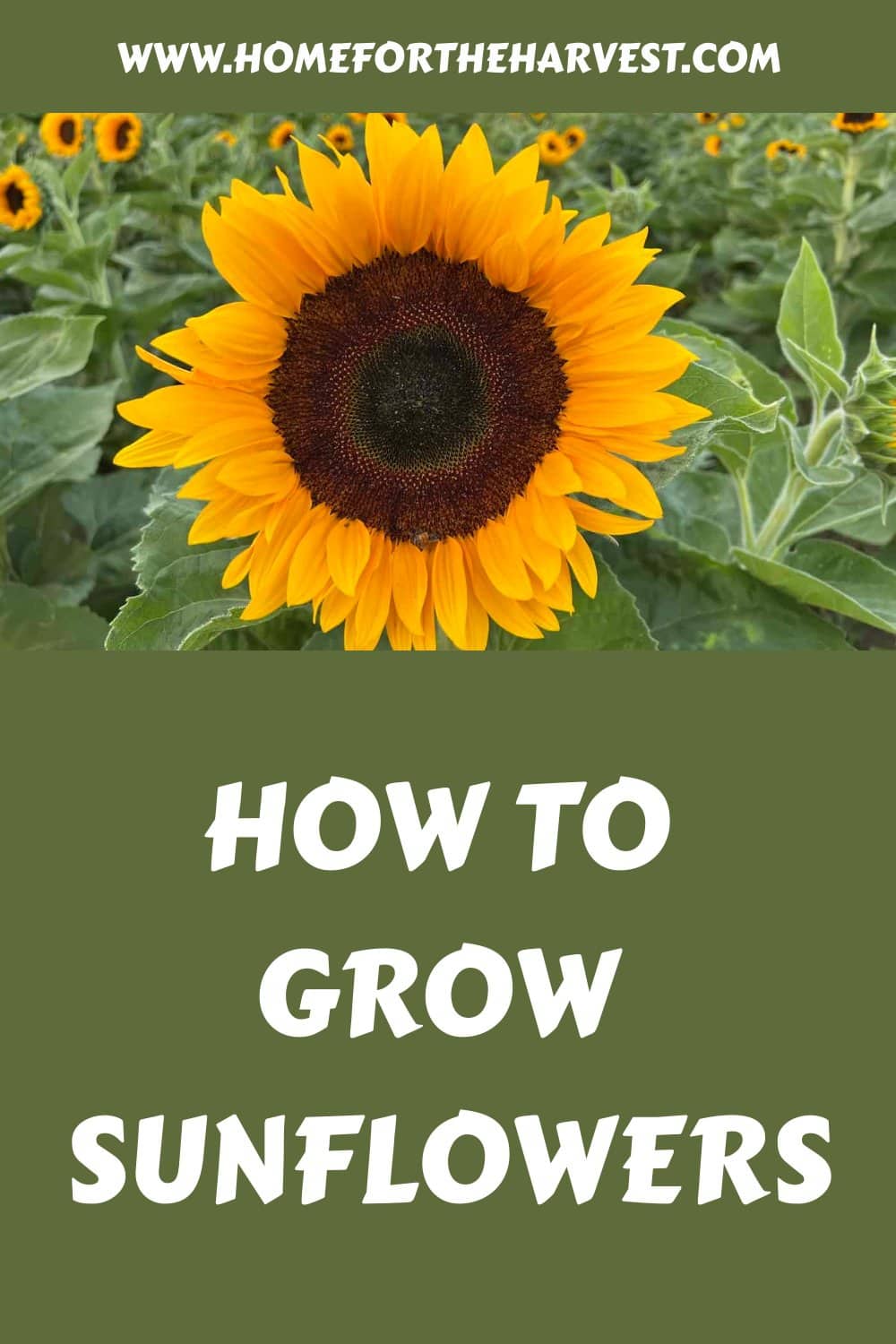Sunflowers are easy and gratifying to grow. Start by choosing a sunny spot in the garden and choosing a variety with your desired height, bloom color, and any other desired characteristics. Sunflower seeds are generally planted directly into outdoor soil around the time of the last spring frost.
Water the seeds and seedlings as they grow, pulling out any weeds that grow near the plant. When you plant flowers, you can either use them in bouquets, let the seeds mature for harvesting, or simply leave the plants standing for the birds in the fall.
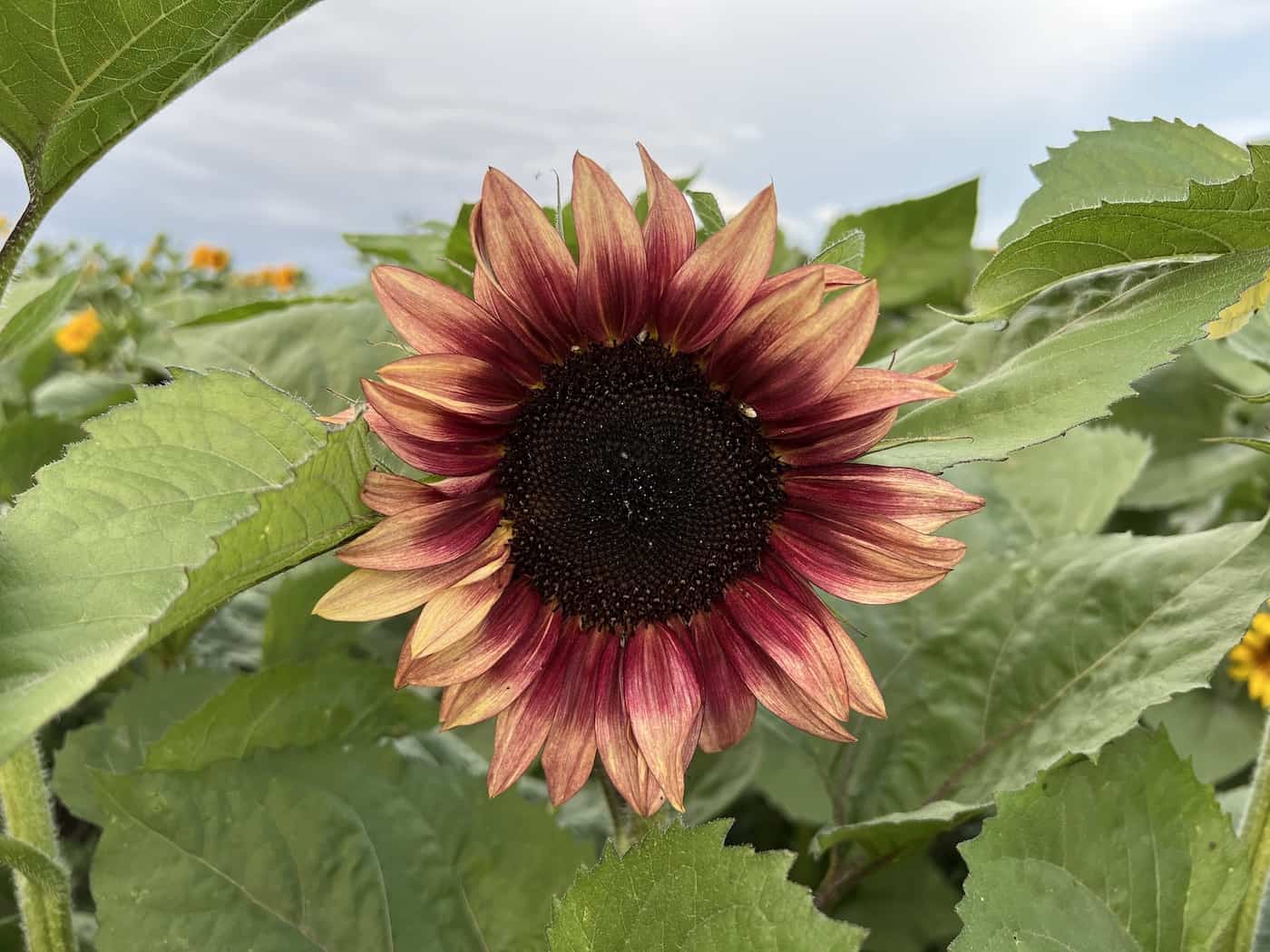
How to grow sunflowers
Sunflowers are one of the most popular things to grow in the garden – and for good reason! They grow quickly, are drought-tolerant, are relatively easy to grow from seeds, and can be planted in flower or vegetable gardens. The large flowers and attractive leaves make them great for adding a bit of color and fun to any yard.
Growing sunflowers starts by selecting the right variety for your purposes. Sunflower varieties come in all sizes, heights, and colors. Choose one that fits your space needs and eventual post-harvest use of the flowers (seeds, bouquets, et cetera).
Then choose a sunny planting spot. Sunflowers need at least 6 hours of direct sunlight each day to thrive throughout the growing season.
Prepare the soil. Loosen the soil in your chosen area and add some compost or manure to help retain moisture, as sunflowers prefer well-draining soil.
Plant your seeds in the spring when the soil warms up. Plant your sunflower seeds about 1 inch deep and 6-12 inches apart, depending on how large the sunflower variety you have chosen is. Give the giant sunflower varieties several feet of room on each side.
Sunflowers need regular watering to stay hydrated. Water deeply about once a week for best results. Fertilizing your sunflowers every few weeks will help them grow better and be more productive.
Keep an eye out for birds, rabbits, deer, and other animals that may try to snack on your sunflowers and take necessary steps to protect them if needed. Sunflowers generally take 3-4 months to grow.

General types of sunflowers to grow
There are quite a few general categories of sunflowers that are grown in the garden because people grow them. Decide which type (or types) you’re interested in before shopping for a specific variety.
- Sunflowers for beauty in the landscape
- Sunflowers for pollinators like bees
- Sunflowers for high-quality (confectionary) snacking seeds
- Sunflowers for pressing sunflower seed oil
- Sunflowers to cut for floral bouquets
- Sunflowers to grow for birdseed
- Sunflowers for maximum height (giant sunflowers)
- Sunflowers for minimum height (for growing in pots or kids’ gardens)
- Sunflowers that come back every year (perennial sunflowers)
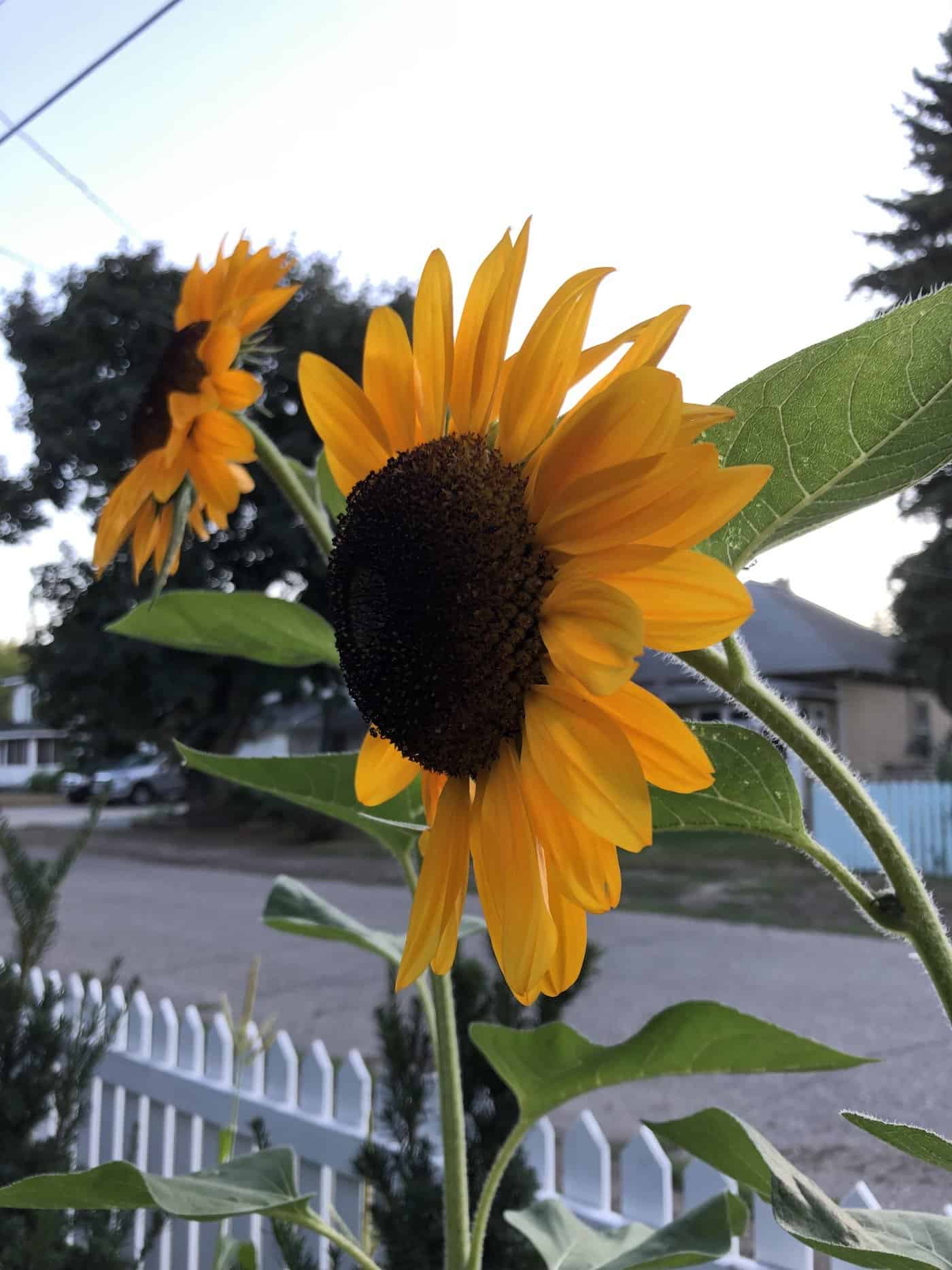
1. Sunflowers for beauty in the landscape
For beauty in the landscape, gardeners generally grow sunflowers with particularly attractive flowers. Some landscape gardeners also like to focus on sunflower varieties that grow multiple heads per plant – called branching sunflowers.
Here are some beautiful varieties to consider for flowering in the garden:
- Velvet Queen sunflower
- Chocolate sunflower
- Rouge Royal (Moulin Rouge) sunflower
- Ring of Fire sunflower
Deadheading branching cultivars will help the plants to continue producing new flowers until the first frost.
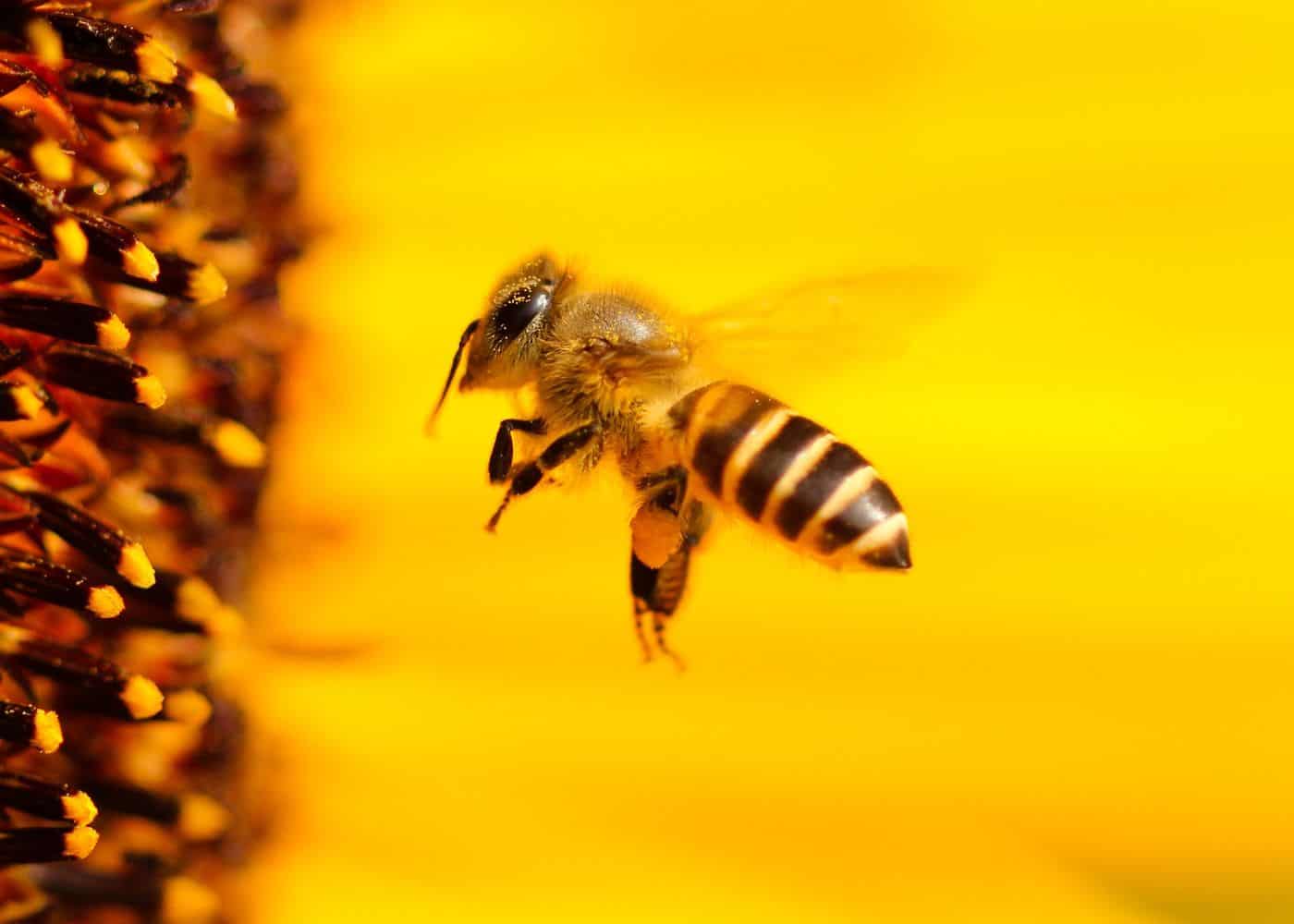
2. Sunflowers for beneficial pollinators
While pollinators like bees generally like all sunflowers, there are certain types that they prefer. They seem to prefer yellow petals. Branching cultivars are also a good choice as they flower over a longer season.
Here are some pollinator sunflower variety picks:
- Lemon Queen sunflower
- Autumn Beauty sunflower
- Gold Rush sunflower
Any sunflower variety that attracts pollinators likely also makes a wonderful companion plant for a number of garden veggies and flowers.
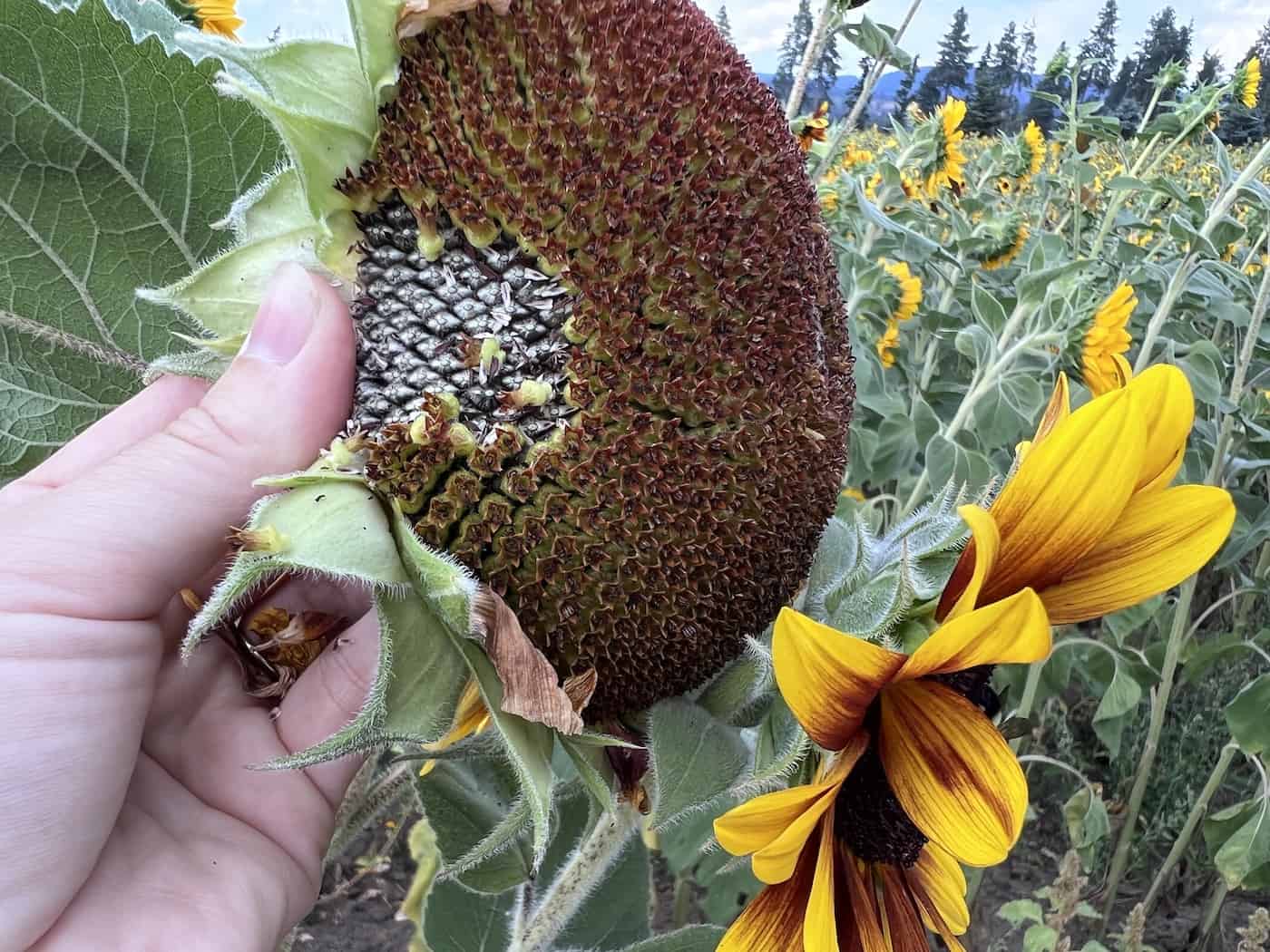
3. Sunflowers for high-quality (confectionary) snacking seeds
Some varieties of sunflowers have much better seeds for roasting and snacking on whole when compared to other varieties. These cultivars tend to have large seeds with shells that have black and white stripes. The heads are typically harvested in late summer and dried in a protected space.
High-quality sunflower seed varieties for eating include:
- Mammoth Grey Stripe sunflower
- Titan sunflower
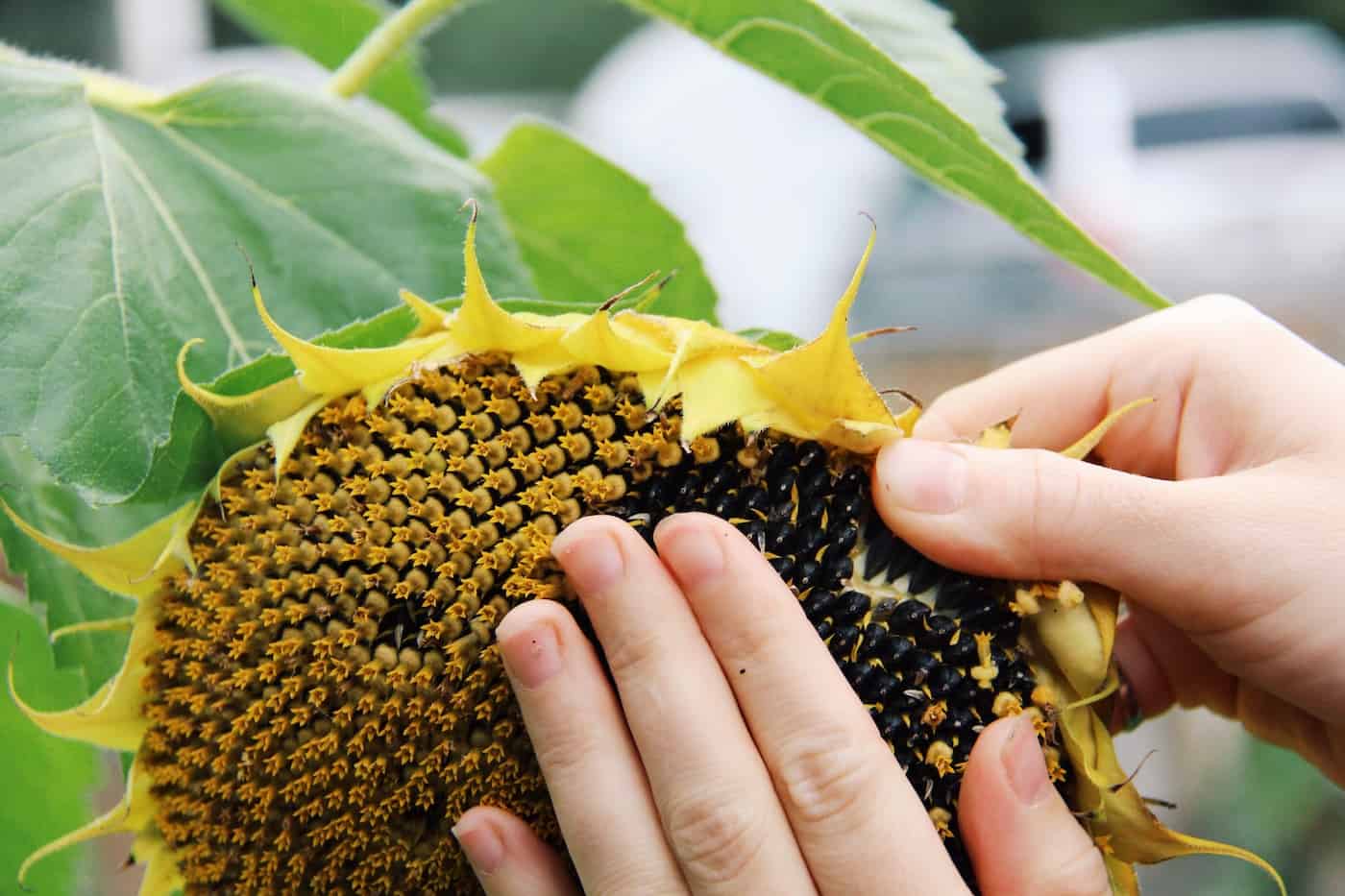
4. Sunflowers for pressing seed oil
Some specially bred types of sunflowers are grown specifically to produce oil. While they do not have particularly large or attractive flowers, these plants produce a copious amount of seed.
Oilseed sunflower varieties would include:
- Peredovik sunflower
5. Sunflowers to cut for floral bouquets
Some varieties of sunflowers are bred primarily to be cut for bouquets. While the flowering season of these types is generally quite short, they are bred to have multiple stems and a very long vase life when cut.
Cut flower sunflower varieties include:
- ProCut Orange sunflower
- Zohar sunflower
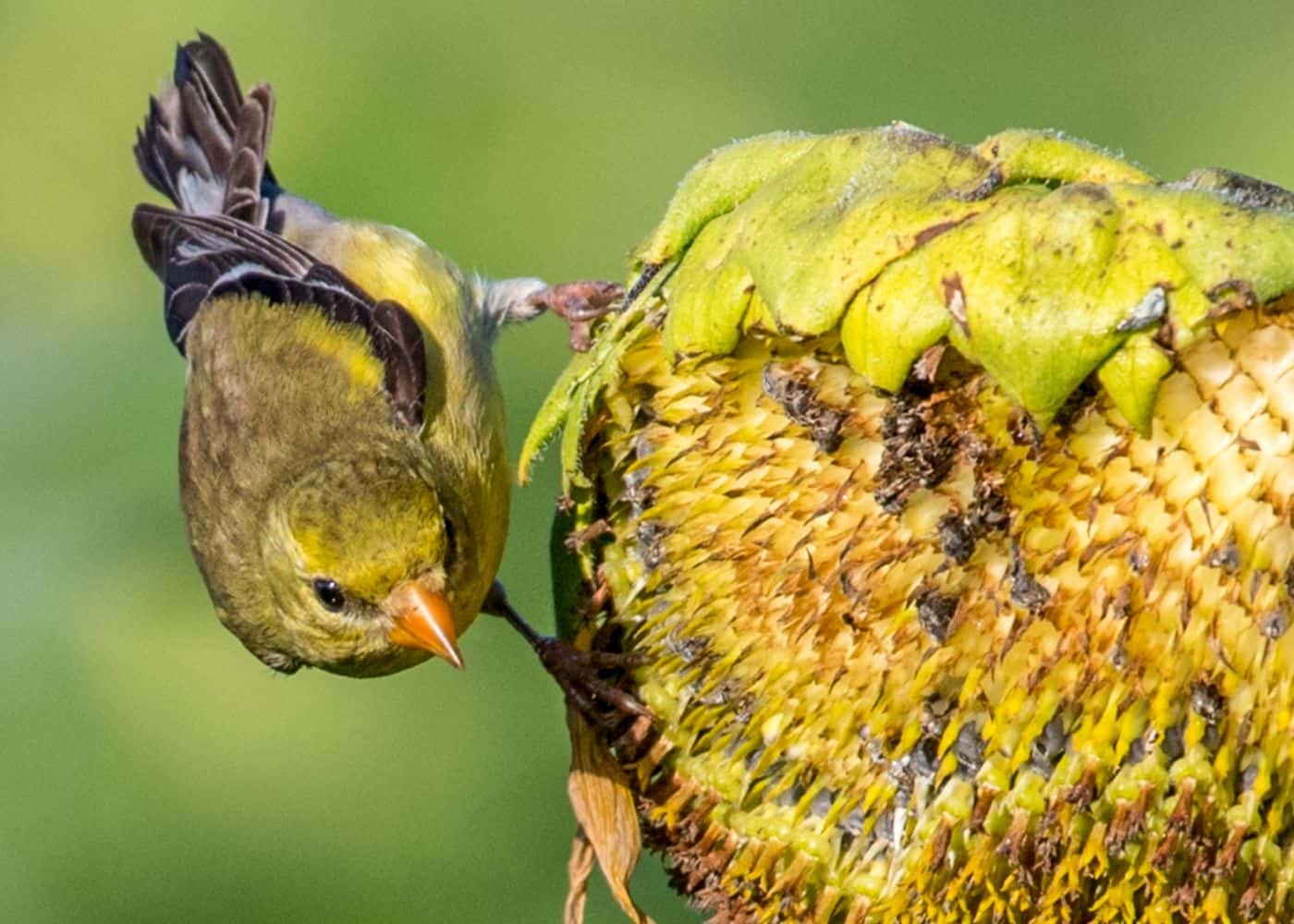
6. Sunflowers to grow for birdseed
If you’re primarily gardening for birds, some varieties of sunflowers are preferred by a variety of wild bird species. These plants produce fat-rich seeds and have thick central stems that make it easier for birds to hold on while they munch away.
Varieties of sunflower good for birds include:
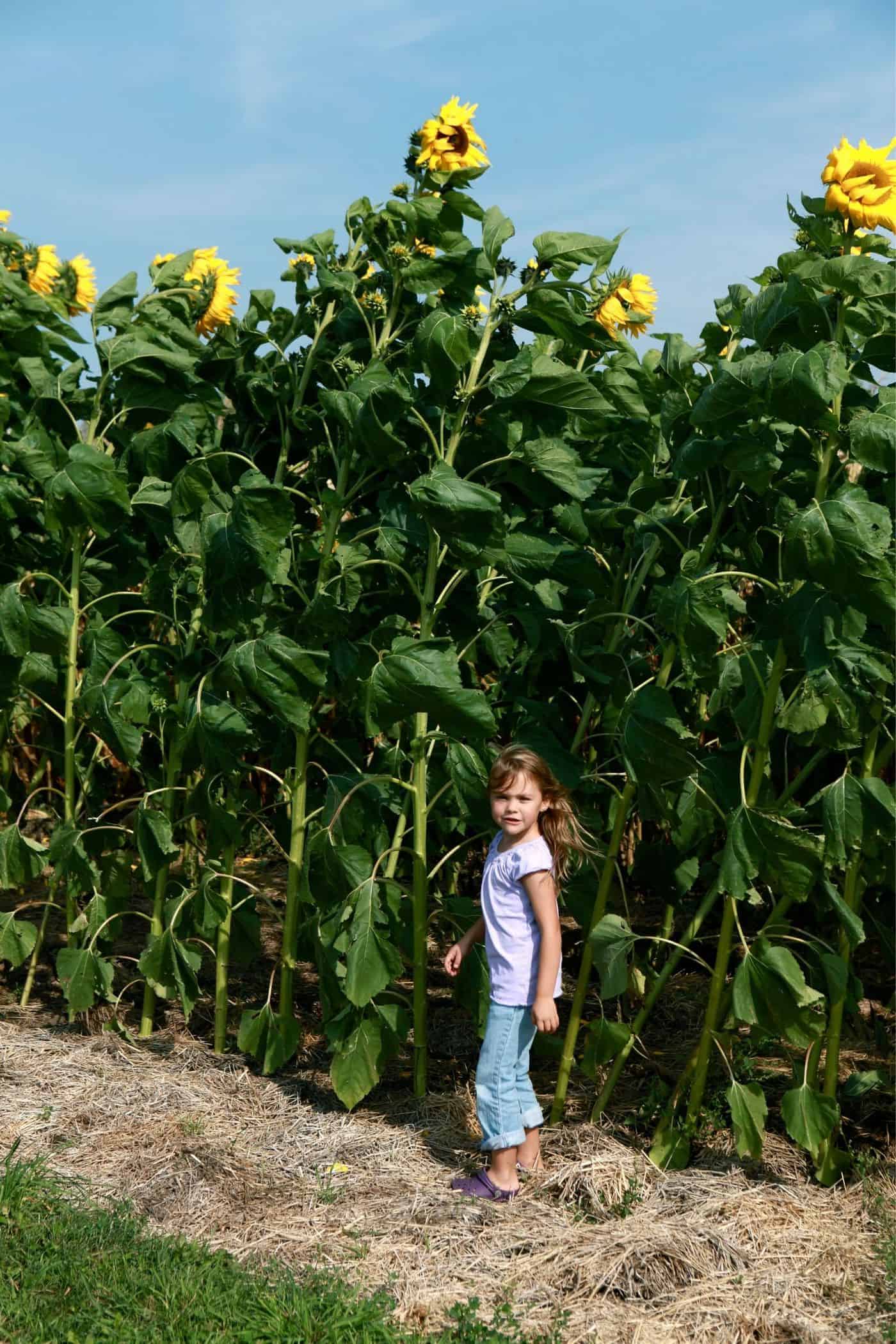
7. Sunflowers for maximum height
It’s so much fun to grow towering, giant sunflowers! But, not all varieties of sunflower are tall. You’ll have to pick a variety that’s bred specifically for maximum height if you want a really big one.
Tall sunflower varieties include:
- Skyscraper sunflower
- Giganteous sunflower
- American Giant sunflower
- Kong sunflower
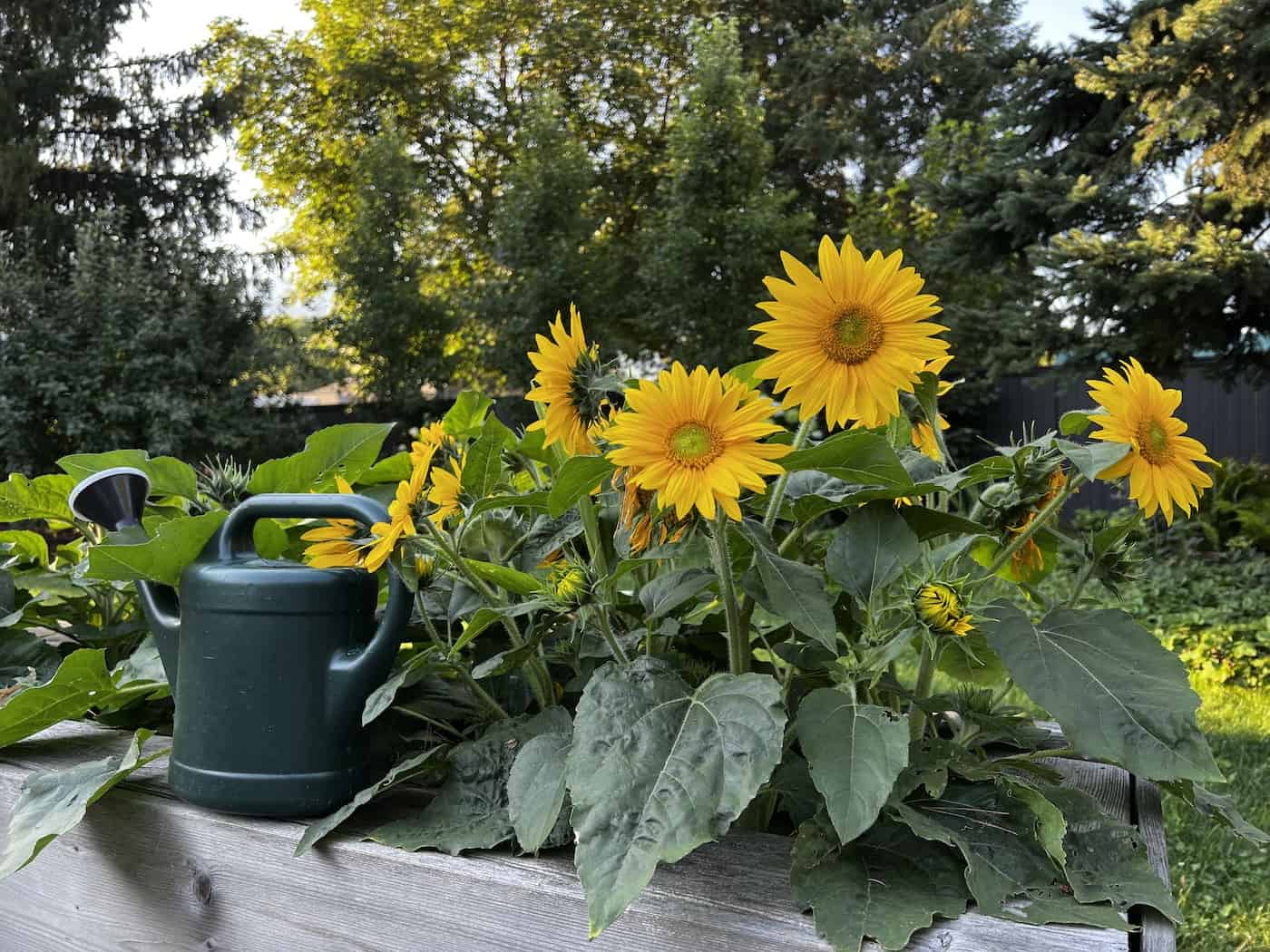
8. Sunflowers for minimum height
On the other hand, tiny little sunflowers are perfect for a children’s garden, growing in a flower pot or even in a window box. They’re also easier to tuck into raised beds or your veggie patch. You can even winter sow the seeds into their permanent flower pot.
Miniature varieties of sunflower include:
- Teddy Bear sunflower
- Suntastic sunflower
- Big Smile sunflower
9. Sunflowers that come back every year (perennial sunflowers)
If you want your garden to be filled with sunshine blooms all summer long, it’s best to plant a variety of perennial sunflowers. These types of sunflowers will come back from the roots year after year with minimal effort on your part.
Perennial sunflowers include:
- Western sunflower (Helianthus occidentalis)
- Swamp sunflower (Helianthus angustifolius)
- Ashy sunflower (Helianthus mollis)
- Jerusalem artichoke (Helianthus tuberosus)
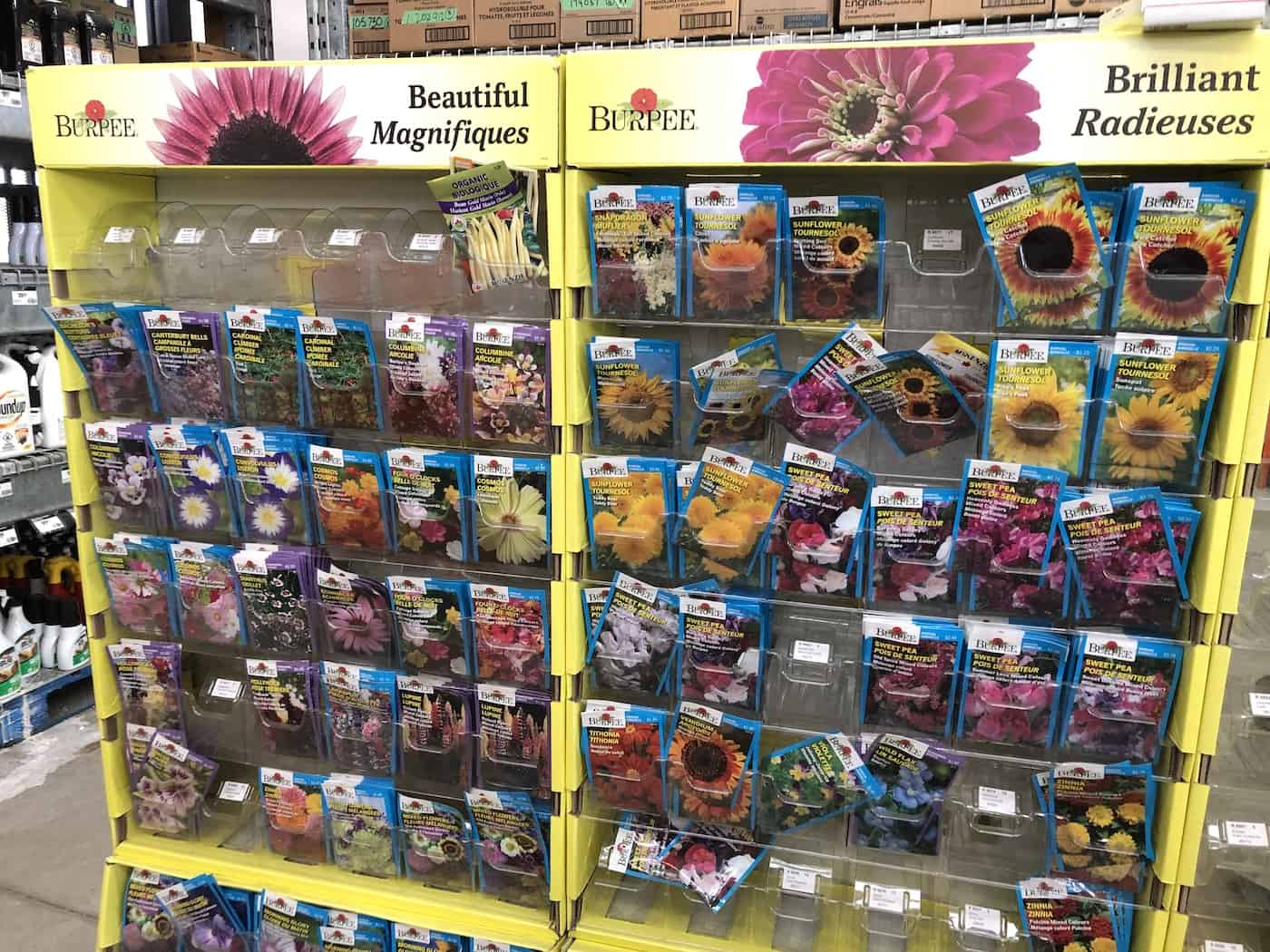
How to plant sunflowers
Sunflowers are a beautiful and easy-to-grow addition to different gardens. The best method is to plant them directly in the ground outdoors. This allows them to have plenty of room to grow and establish strong root systems.
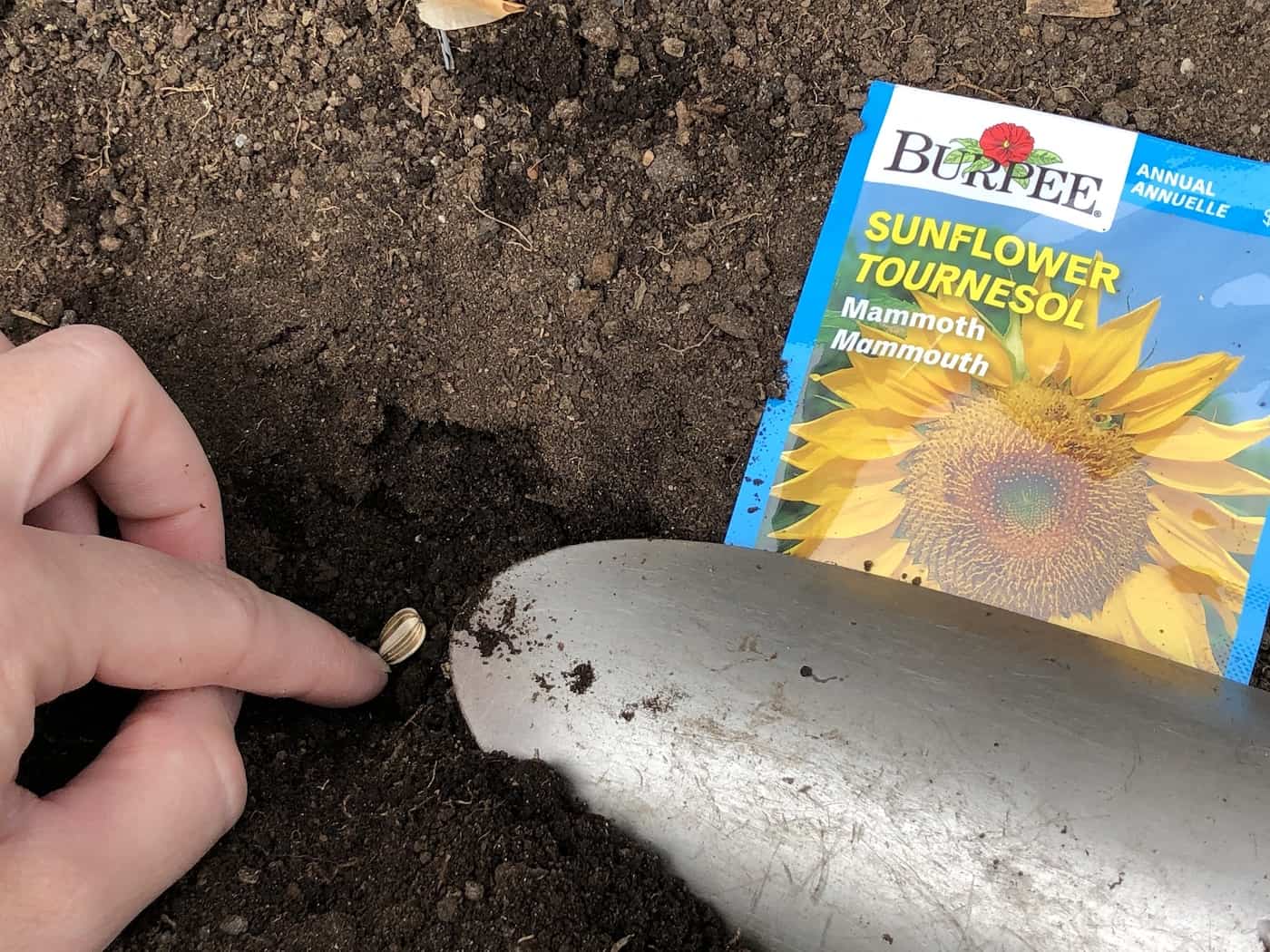
How to plant sunflower seeds in the outdoor garden
To plant sunflowers in the ground outdoors, follow these simple steps:
- Choose a sunny location in your garden that has well-draining soil. Sunflowers need plenty of sunlight to thrive, so make sure they will receive at least six hours of direct sunlight per day.
- Prepare the soil by loosening it with a fork and removing any weeds or debris. Sunflowers prefer rich, well-draining soil, so you may want to mix in some compost or well-rotted manure to help improve the soil structure.
- Plant the sunflower seeds about 1 inch deep and about 12 inches apart. If you are planting multiple rows of sunflowers, space the rows about 18-36 inches apart. Since there is such a wide range in the mature height of sunflowers, be sure to follow the spacing info on the seed packet.
- Water the seeds well, making sure the soil is evenly moist but not soggy. Keep the soil consistently moist until the seeds germinate and the seedlings are established.
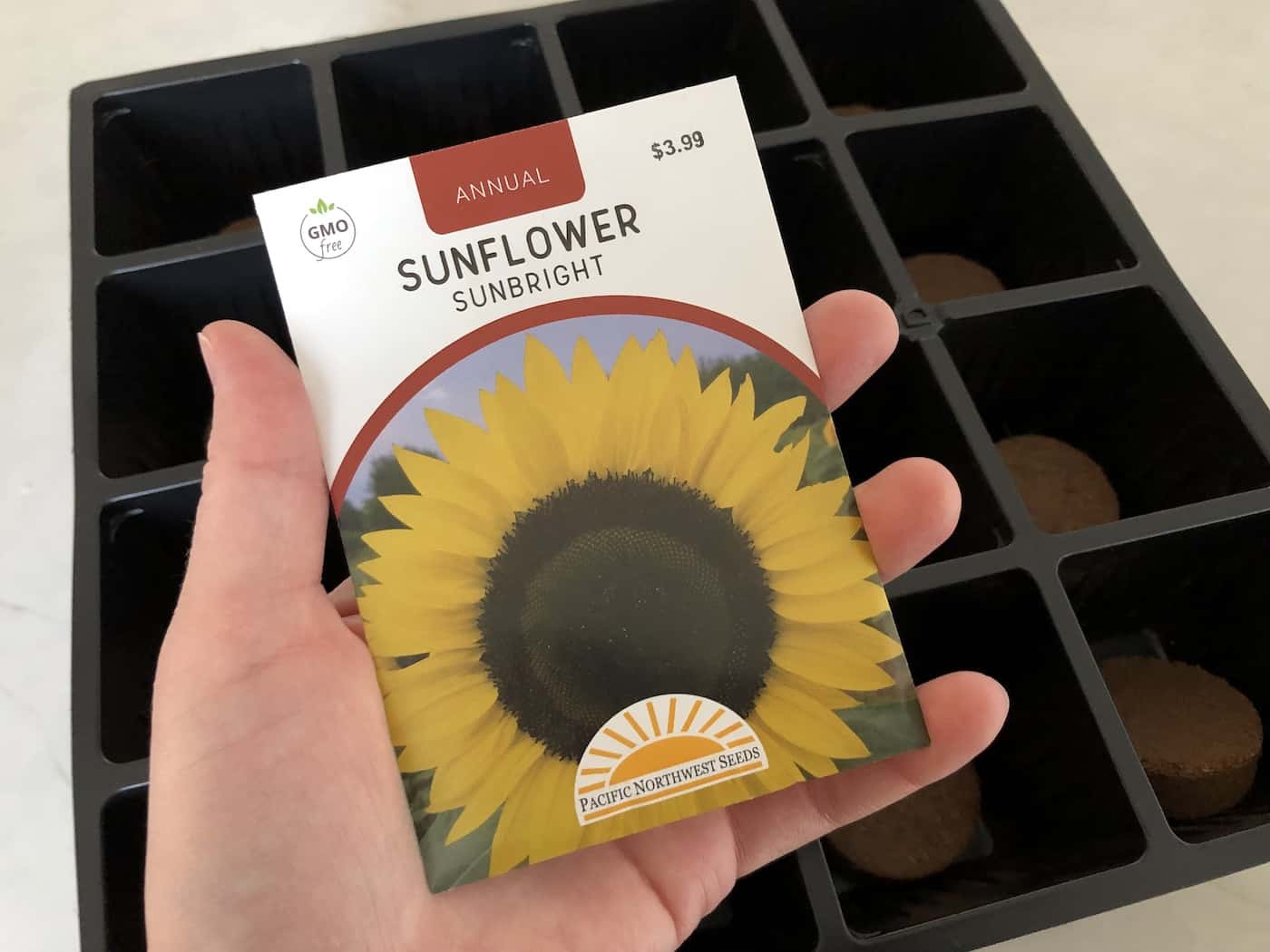
How to start sunflower seeds indoors for later transplanting
While planting sunflowers directly in the ground is the best option, it is also possible to start them indoors in seedling trays and transplant them outside later. This is a good option if you live in an area with a short growing season or if you want to get a head start on the growing season.
To plant sunflowers indoors, follow these steps:
- Fill a seedling tray or pots with a high-quality seed-starting mix. Water the mix until it is evenly moist but not soggy.
- Sow the sunflower seeds according to the package instructions.
- Place the tray or pots in a sunny location, such as a windowsill or under grow lights. Keep the soil consistently moist and provide the seedlings with plenty of sunlight.
- When the seedlings are about 4 inches tall and the danger of frost has passed, you can transplant them outside. To do this, choose a sunny location in your garden and prepare the soil as described above. Carefully transplant the seedlings, making sure to handle them gently and keep the root ball intact. Water the seedlings well after planting and keep the soil consistently moist until they are established.
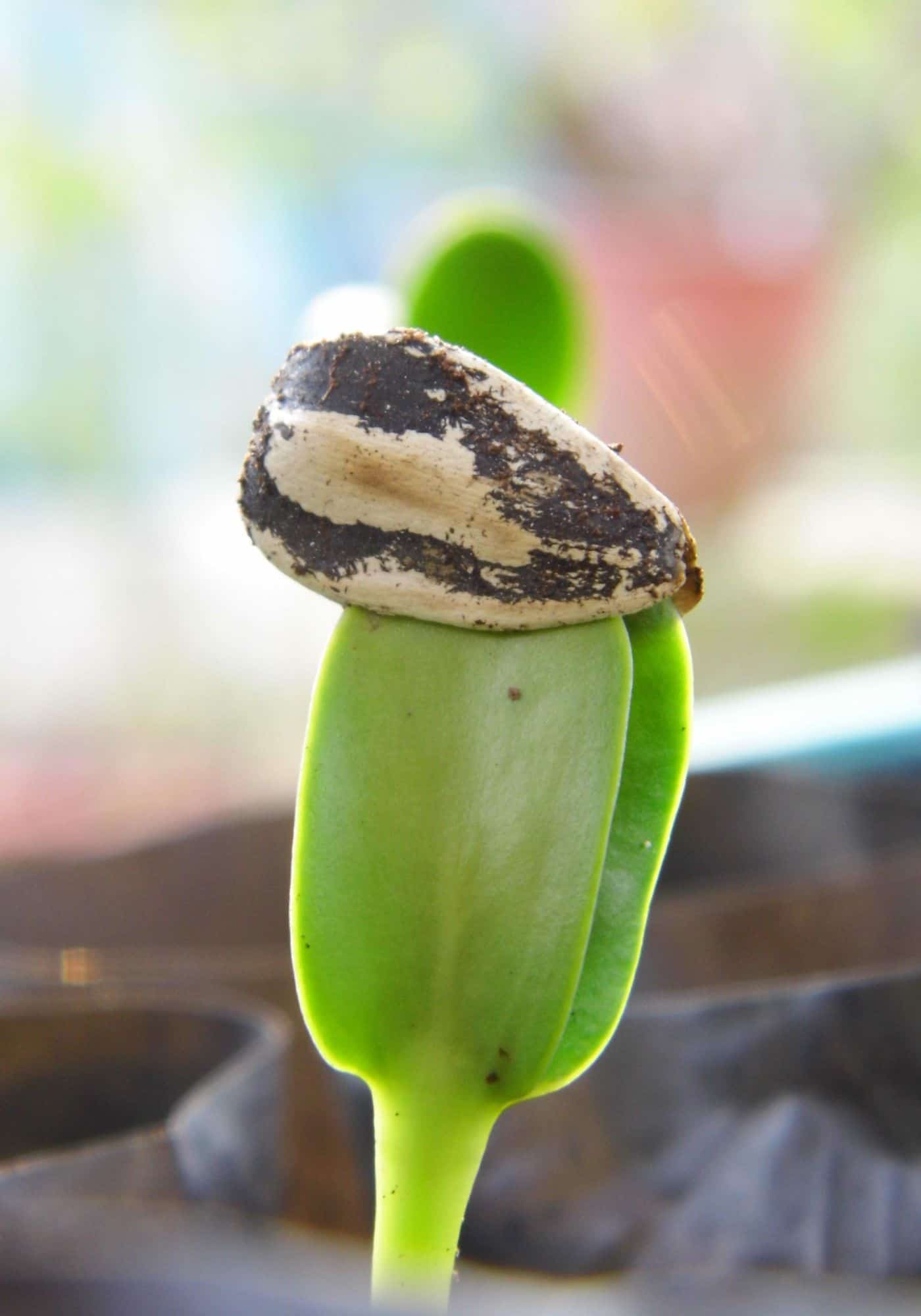
Tips for successfully sprouting sunflower seeds
You can take a few key steps to help sunflower seeds sprout and grow into healthy seedlings. Here are some tips for success:
- Use high-quality seeds: Make sure to purchase your sunflower seeds from a reputable source and check the expiration date to ensure that they are fresh. Old or low-quality seeds may not germinate as well.
- Plant the seeds at the right depth: Sunflower seeds should be planted about 1 inch deep in the soil. If they are any deeper, they may have difficulty germinating, while planting them too shallow may cause them to dry out.
- Provide the seeds with the right conditions: Sunflowers need plenty of sunlight and well-draining soil to thrive. Choose a sunny location in your garden and prepare the soil by loosening it with a fork and removing any weeds or debris. Mix in some compost or well-rotted manure to help improve the soil structure.
- Keep the soil consistently moist: Water the seeds well after planting, making sure the soil is evenly moist but not soggy. Keep the soil consistently moist until the seeds germinate, and the seedlings are established.
- Be patient: Sunflower seeds can germinate for several days to a week or more, depending on the temperature and moisture conditions. Be patient and give them time to sprout.
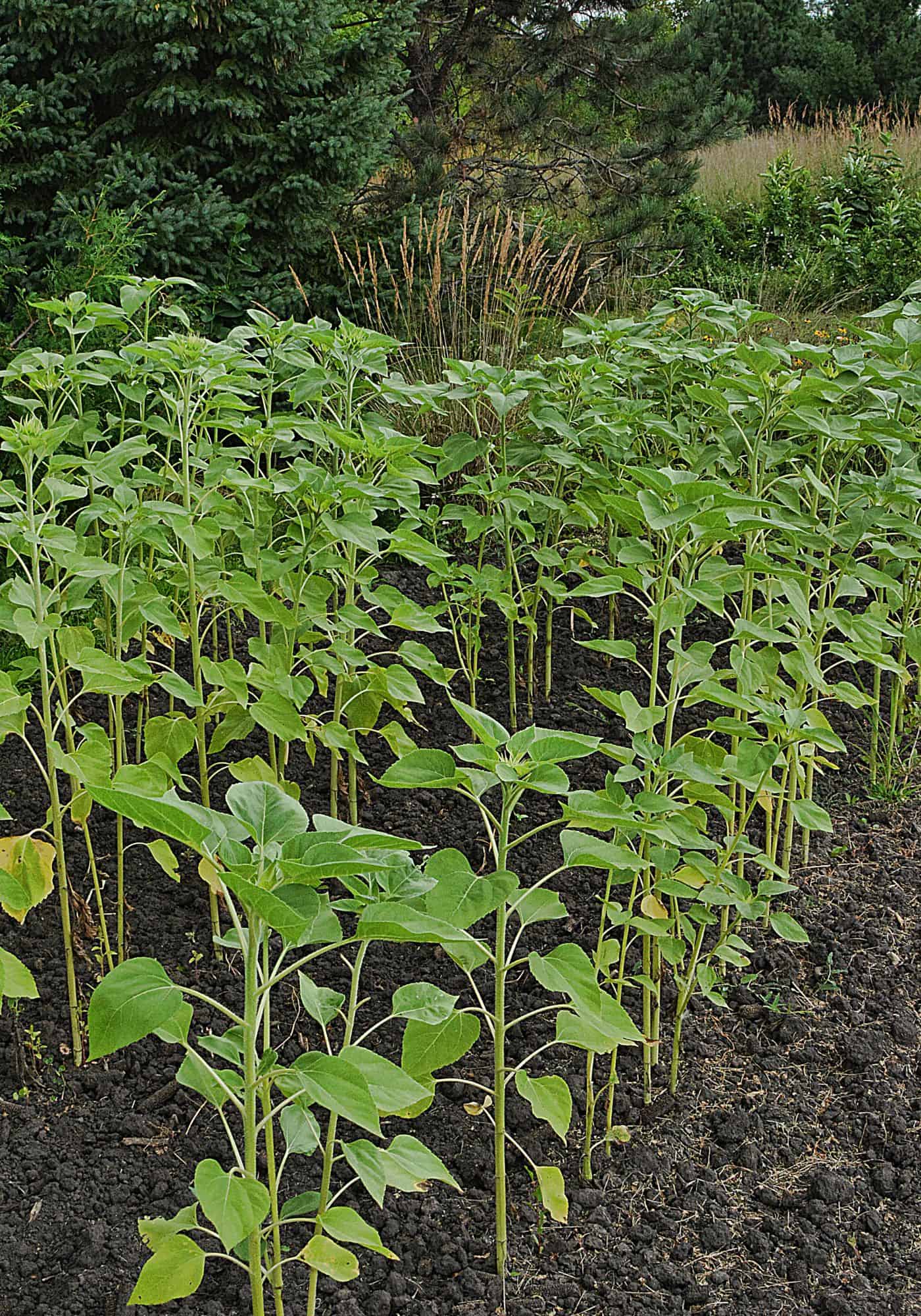
Helping a sunflower plant thrive before it flowers
Helping a sunflower plant to be healthy before it flowers can make the blooms particularly spectacular. You want to help the plant get as much sunlight, nutrients, and water as possible so that the plant has tons of energy to put into the flower head.
There are several things you can do to help a sunflower plant thrive during its vegetative growth phase before it flowers:
- Provide plenty of sunlight: Sunflowers need at least six hours of direct sunlight per day to thrive. Choose a sunny location in your garden and make sure the plants have access to plenty of sunlight.
- Water consistently: Water your sunflower plants consistently, making sure to keep the soil evenly moist but not soggy. Water the plants at the base of the stem, being careful not to get the foliage wet, as this can encourage the growth of fungal diseases.
- Fertilize regularly: Sunflowers benefit from regular fertilization, especially during their vegetative growth phase. Use a balanced fertilizer, following the package instructions for the appropriate amount. You can also use a slow-release fertilizer or a liquid fertilizer if desired.
For tall sunflower varieties
As taller sunflowers grow, they may need support to keep them upright. You can use stakes, cages, or trellises to help support the plants. Staking tall sunflower varieties can prevent them from toppling over as they grow.
- Choose your stakes: You can use wooden stakes, bamboo poles, or metal stakes to support your sunflowers. Whatever you use, make sure the stakes are sturdy and tall enough to support the plants as they grow.
- Install the stakes: Before planting your sunflower seeds or seedlings, install the stakes in the ground. Space them about 18-24 inches apart and push them into the ground until they are firmly in place. You can also use twine or wire to help secure the stakes to the plants.
- Tie the plants to the stakes: As the sunflowers grow, tie them gently but securely to the stakes using twine or wire. Make sure the ties are not too tight, as this can damage the stems. You can also use plant clips or ties specifically designed for staking plants.
- Adjust the ties as needed: As the sunflowers continue to grow, check the ties regularly and adjust them as needed to keep the plants supported. Be sure to handle the plants gently and avoid damaging the stems.
For branching sunflower varieties
To encourage the growth of new flowers, remove any spent flowers (ones that have wilted and turned brown) as soon as you notice them. This will help the plant direct its energy towards producing new flowers rather than seed production.
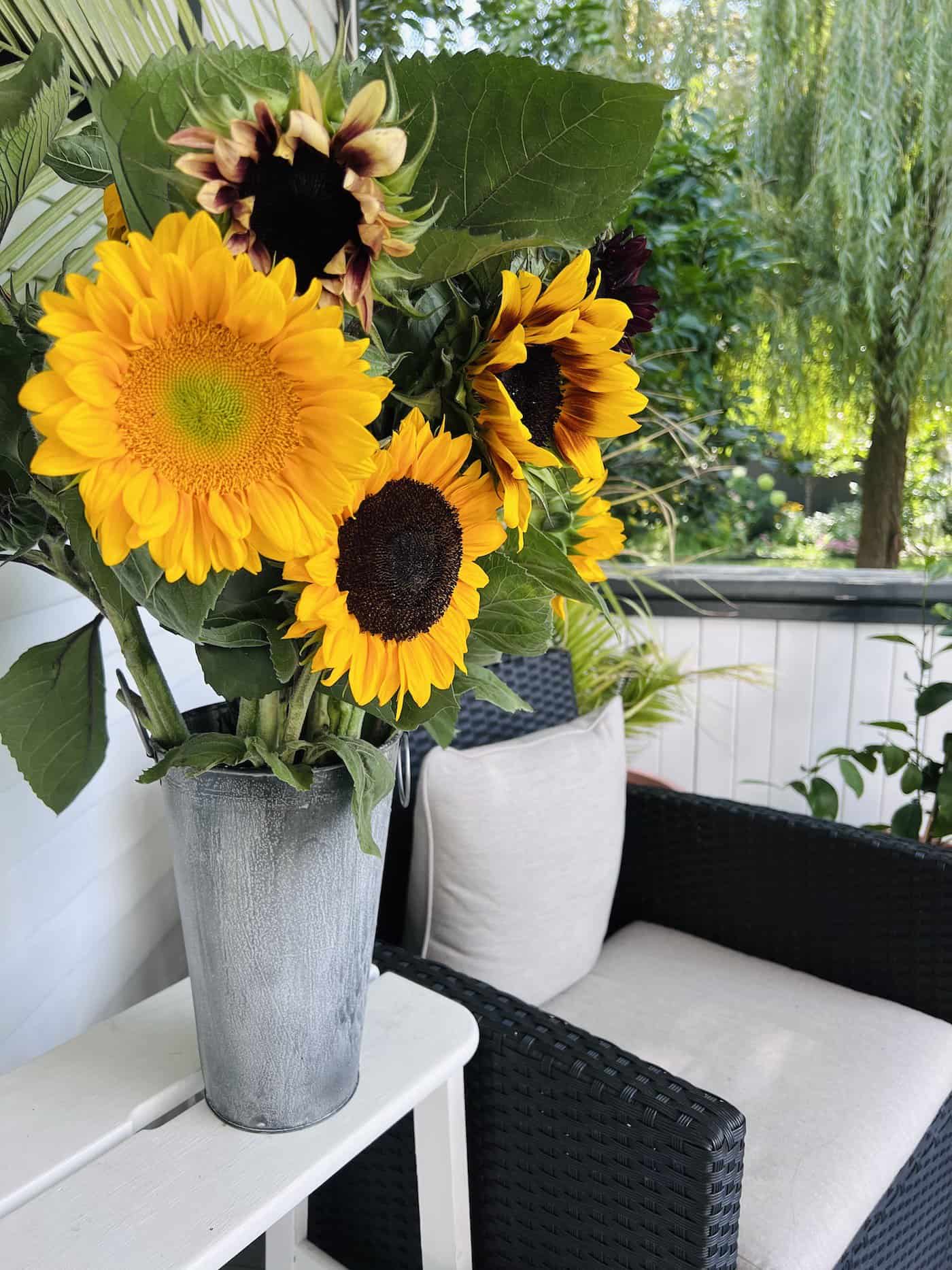
How and when to harvest sunflowers
Harvesting sunflowers is a rewarding experience that allows you to enjoy the fruits of your labor and appreciate the beauty of these cheerful and easy-to-grow flowers. There are a few different ways to harvest sunflowers, depending on what you want to use them for. Here’s a guide to help you know when to harvest sunflowers and how to do it:
Harvesting sunflowers for floral bouquets
If you want to use sunflowers in a bouquet, the best time to harvest them is when the flowers are just starting to open. Cut the stem about an inch below the bloom using sharp scissors or a knife. Make sure to leave some foliage on the stem, as this will help keep the flower hydrated. Place the cut flowers in a vase of cool water as soon as possible to keep them fresh.
Harvesting mature flower heads for seed harvesting
If you want to harvest sunflower seeds, wait until the flower heads are fully mature and the petals have started to turn brown and dry. You can tell when the seeds are ready to harvest by gently squeezing the back of the flower head. If the seeds come out easily, they are ready to be harvested.
To harvest the seeds, cut the flower head off the plant and remove the seeds by rubbing the back of the head with your hand or using a fork. Dry the seeds completely before storing them in a cool, dry place.
Harvested sunflower seeds can be roasted whole for snacking, hulled and used in baking or as an ingredient in other recipes, hulled and pressed into sunflower oil, or simply saved for planting next year.
Leaving the seed heads for the birds
If you want to attract birds to your garden, you can simply leave the seed heads on the plants. As the seeds mature, the birds will be attracted to them and will feed on them. This is a great way to provide a natural source of food for birds and to give them a reason to visit your garden.
No matter how you harvest your sunflowers, they will surely add beauty and joy to your garden and your life. So go ahead, plant some sunflowers, and experience the magic of these cheerful and easy-to-grow flowers for yourself.
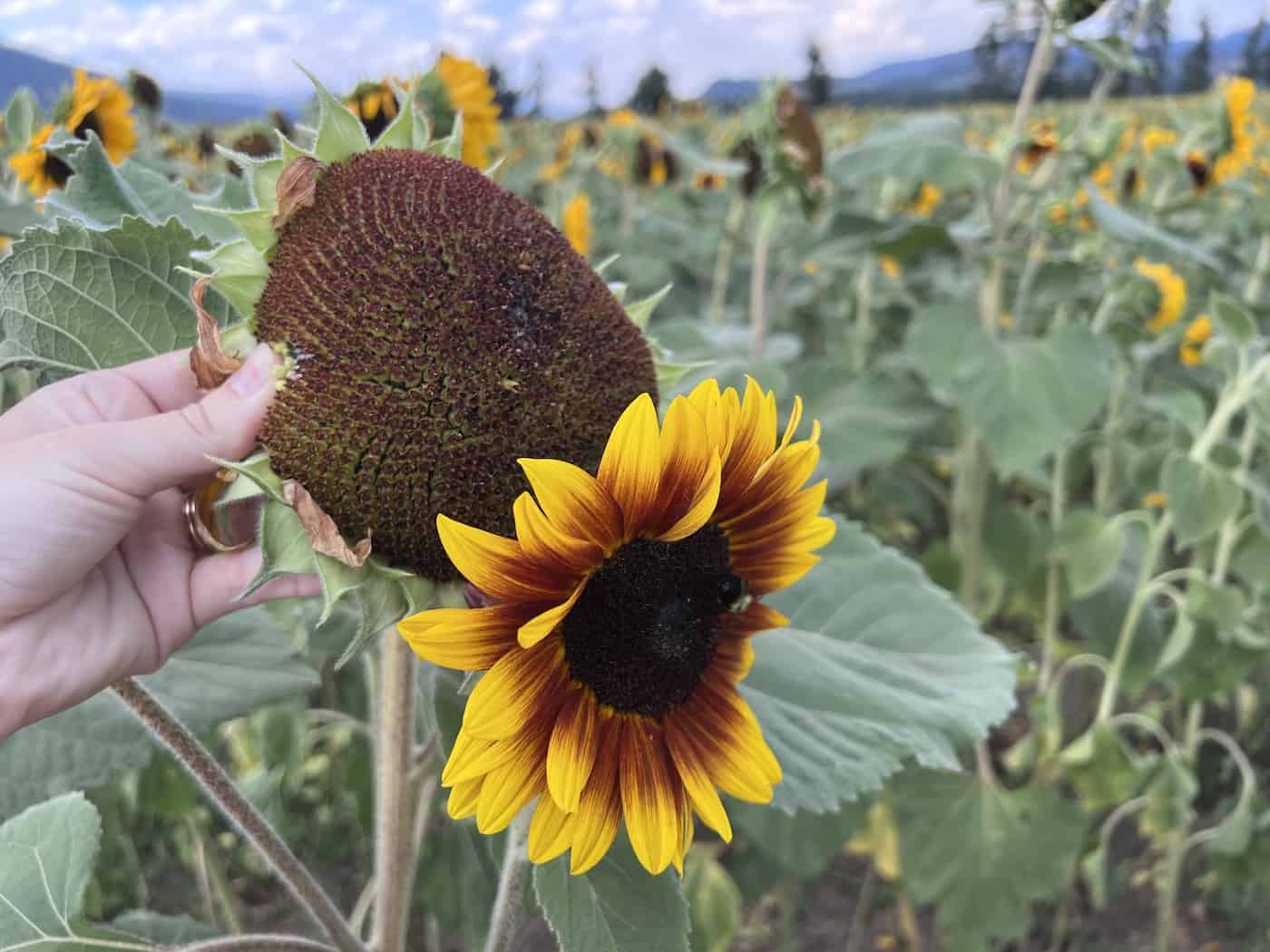
How to save sunflower seeds for planting next year
Harvesting and saving sunflower seeds for planting next year is a fun and easy way to extend the life of your sunflower plants and enjoy them year after year. Plus, saving your own seeds can save you money and allow you to grow a variety of sunflowers that may not be available for purchase. Here’s a guide to help you save sunflower seeds for planting next year:
- Harvest the seed head: When the sunflower petals start to turn brown and dry, and the back of the seed head can be easily squeezed, it is time to harvest the seeds. Cut the seed head off the plant, leaving a few inches of stem attached.
- Let the seed head dry: Place the seed head in a dry, well-ventilated location, such as a garage or shed, and let it dry completely. This can take several days to a week or more, depending on the humidity and temperature.
- Remove the seeds: Once the seed head is completely dry, you can remove the seeds by gently rubbing the back of the head with your hand or using a fork. You may also need to remove any remaining bits of stem or petals.
- Dry the seeds: Place the seeds in a single layer on a paper towel or a tray lined with parchment paper and let them dry completely. This can take several more days, depending on the humidity and temperature.
- Store the seeds: Once the seeds are completely dry, store them in a cool, dry place, such as a jar or envelope. Glass jars are typically better for a longer storage life than plastic or paper packages. You can also store them in the refrigerator or freezer to help extend their shelf life. Be sure to label the seeds with the variety and the date they were harvested.


